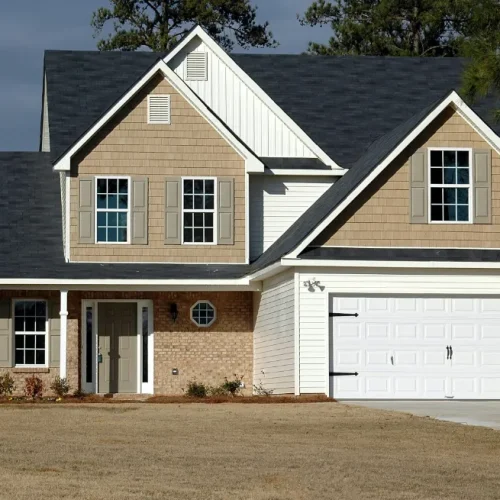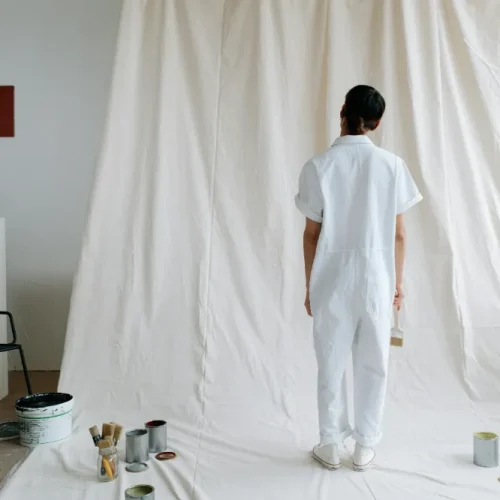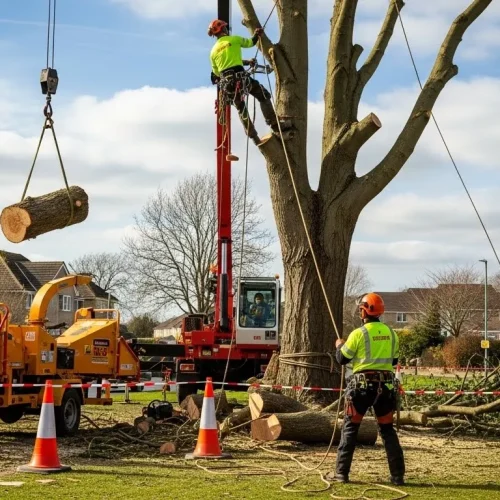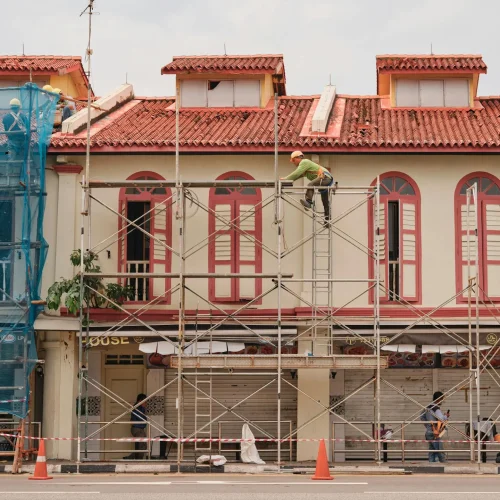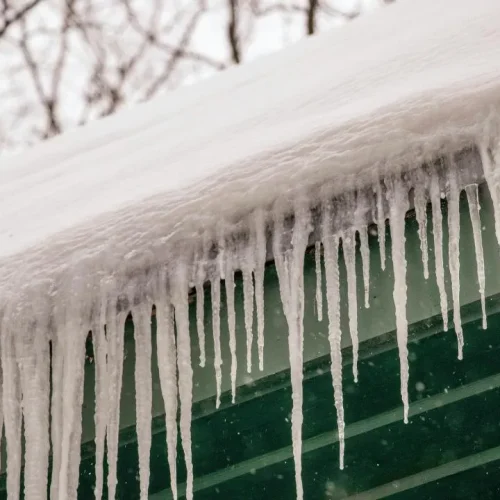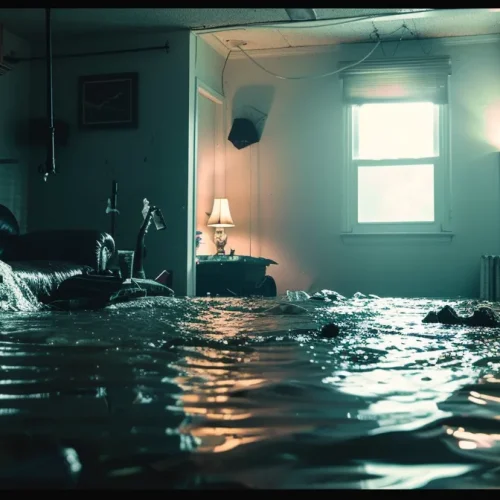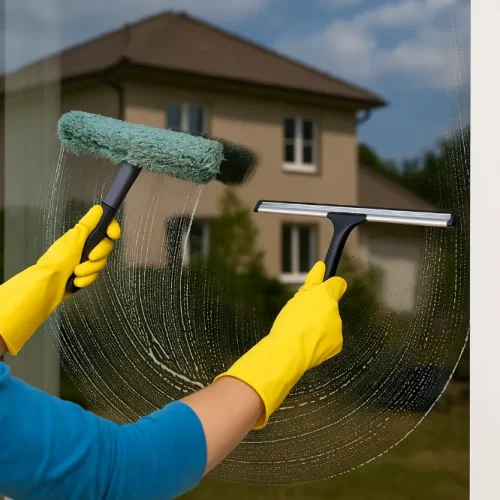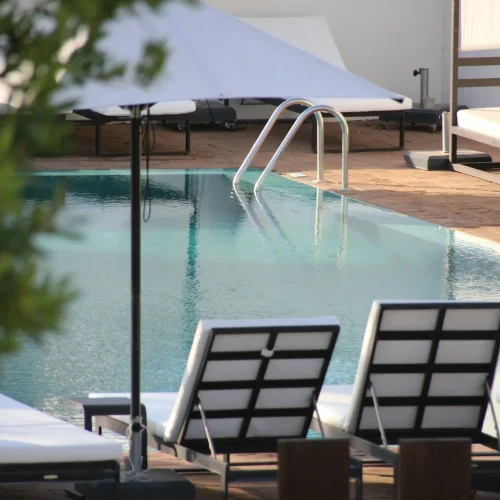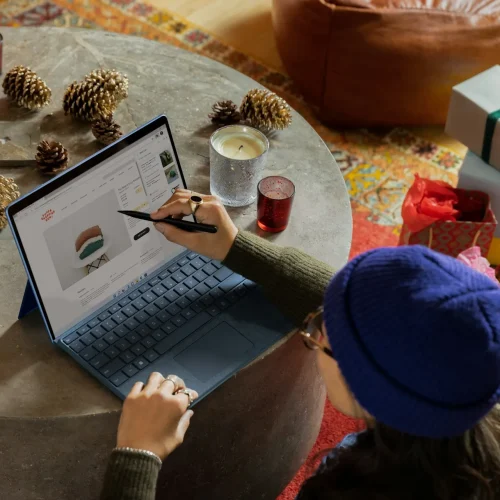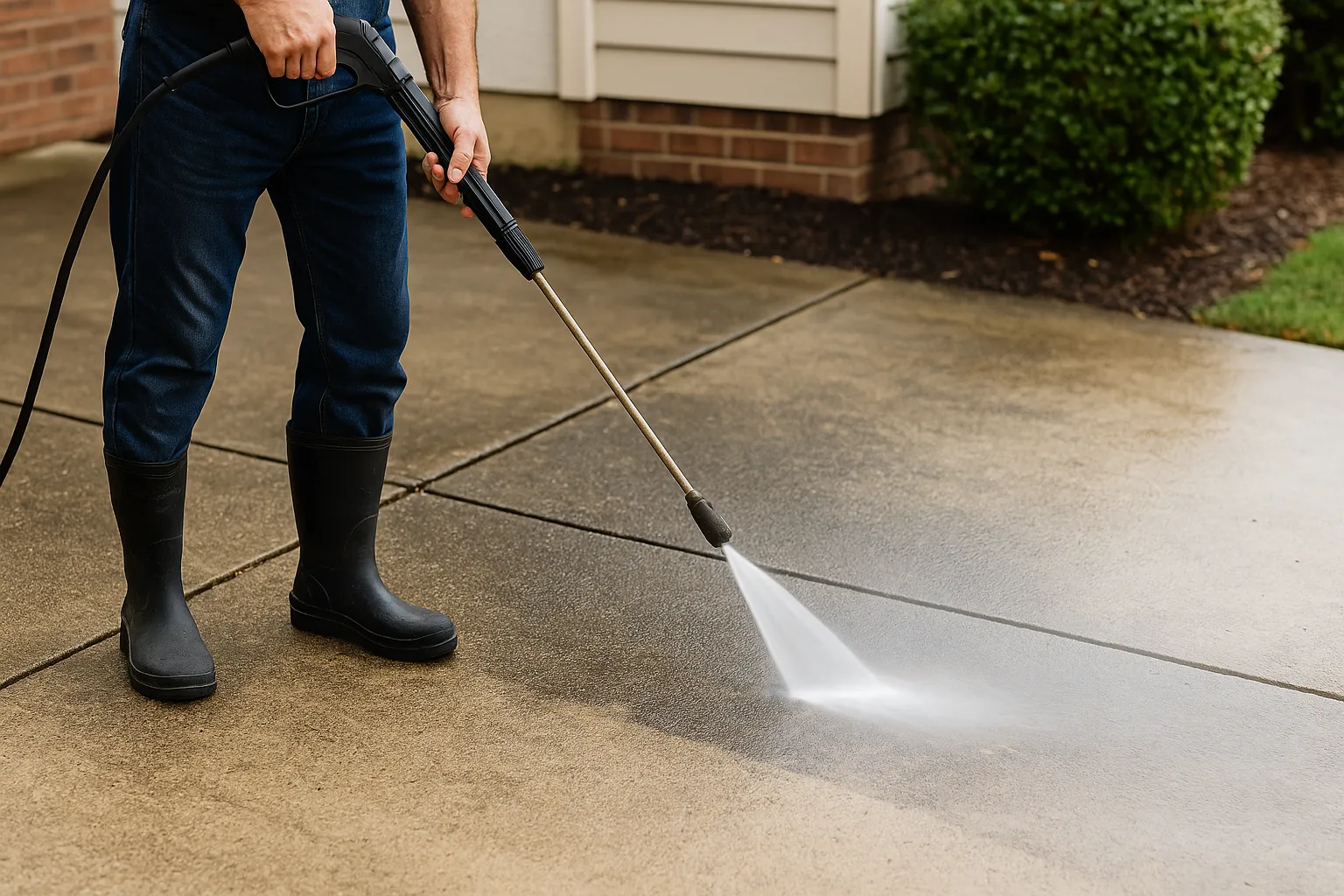
Your driveway does more than park your car — it sets the tone for your home. It’s the first thing people see, the surface you drive on daily, and the pathway that weathers every storm, oil leak, and footstep. Over time, even the toughest materials start to look tired. Stains, cracks, algae — they creep in quietly. And that’s when most homeowners start looking into professional pressure washing services or wonder if it’s time to resurface. It’s not always an easy choice, but understanding when and why to pressure wash can save you thousands — and years of extra lifespan — on your driveway.
The Real Power Behind Pressure Washing
A pressure wash isn’t just about blasting water. It’s about restoration. It uses high-pressure streams to remove layers of dirt, oil, mold, and grime that normal cleaning could never touch. Think of it as a reset button for your driveway — peeling back years of wear in just a few hours.
There are two main methods professionals use:
- Pressure Washing — high-velocity water jets that clean deep into porous materials like concrete.
- Soft Washing — lower pressure combined with biodegradable detergents for delicate surfaces like pavers, asphalt overlays, or resin-bound driveways.
Both have their place, but the trick lies in knowing which method your driveway needs. Concrete can handle the strength. Asphalt? That’s another story — too much force and you could strip the surface layer.
Why Pressure Washing Matters More Than You Think
Cleaning your driveway isn’t about vanity. It’s about preservation. Letting grime build up isn’t just ugly — it’s costly. Here’s what regular cleaning prevents:
- Structural Damage – Dirt, oil, and mold seep into porous surfaces, breaking them down from within.
- Surface Erosion – Moisture trapped beneath dirt expands and contracts, leading to cracks and pits.
- Slippery Hazards – Moss, algae, and oil make driveways slick — an accident waiting to happen.
- Premature Aging – Stains and embedded residue weaken the surface faster, reducing overall lifespan.
Pressure washing strips all that away. You’re not just cleaning; you’re extending the life of your investment.
When Is the Right Time to Pressure Wash?
Every driveway tells a story — if you know what to look for. Here are some clear signs it’s time to roll out the hose:
| Sign | What It Means |
| Black or green streaks | Algae and mildew are thriving. |
| Slick, slippery patches | Organic growth has made the surface unsafe. |
| Oil stains that won’t budge | Contaminants have penetrated deep into the pores. |
| Faded, dull surface | UV rays and grime buildup have dulled your concrete. |
| You’re planning to seal or paint | You’ll need a perfectly clean base for adhesion. |
Timing is everything. For most homeowners, one pressure wash per year is enough. In humid or high-traffic environments, aim for every six months. The best seasons? Spring or fall. You’ll avoid freezing temps and prepare your surface for sealing or winter weather.
Understanding Driveway Resurfacing
Resurfacing takes things a step further. Instead of cleaning, it renews. It’s the process of applying a brand-new top layer — usually concrete or asphalt — over an existing base. It covers cracks, discoloration, and moderate wear. Think of it as a facelift rather than a full reconstruction.
The Advantages
- Extends Lifespan: Adds 5–10 years to your driveway’s durability.
- Enhances Appearance: You can choose new textures, colors, or patterns.
- Prevents Further Damage: Fills in cracks that would otherwise expand.
- Boosts Property Value: A fresh driveway adds immediate curb appeal.
- Less Expensive Than Replacement: Costs a fraction of tearing everything out.
But it’s not for every driveway. Resurfacing only works if the underlying foundation is structurally sound. If the base is crumbling, replacement may be the only safe option.
Pressure Wash vs. Resurface: How to Decide
You don’t need to guess. Use this simple comparison table to make the right call:
| Condition | Best Option |
| Light dirt, grime, or oil stains | Pressure Wash |
| Faded surface color or minor streaks | Pressure Wash |
| Small cracks (<¼ inch) | Resurface (after cleaning) |
| Extensive cracks or potholes | Resurface |
| Uneven texture or crumbling edges | Resurface |
| Preparing for sealing or coating | Pressure Wash first |
In essence:
- If it’s cosmetic — wash it.
- If it’s structural — resurface it.
Breaking Down the Costs
Here’s the part most homeowners care about — cost. Let’s compare the two options side by side:
| Service | Average Cost | Longevity | DIY or Pro |
| Pressure Wash | $100–$500 | 6–12 months | DIY or Pro |
| Resurfacing | $3–$7 per sq. ft. | 5–10 years | Professional only |
| Replacement (for context) | $7–$14 per sq. ft. | 15–20 years | Professional only |
Pressure washing is the budget-friendly maintenance hero. Resurfacing, on the other hand, is an investment in long-term strength and aesthetics. Most homeowners do both — clean annually, resurface every 7–10 years.
Why Cleaning Always Comes First
If you’re resurfacing, never skip cleaning. A clean surface is the foundation for a strong bond between old and new layers. Failing to pressure wash before applying resurfacing material can lead to peeling, bubbling, or uneven curing.
Professional crews often follow this prep process:
- Sweep and blow away loose debris.
- Apply degreaser to oil spots.
- Pressure wash thoroughly to remove hidden contaminants.
- Let the surface dry completely.
- Apply primer or bonding agent before resurfacing.
Skipping any of these steps means risking the new surface separating prematurely. Clean first — always.
Material-Specific Pressure Washing Tips
Not all driveways are created equal. Each material reacts differently under pressure.
Concrete Driveways
- Very porous — perfect candidate for pressure washing.
- Use around 3,000–3,500 PSI with a surface cleaner for even results.
- Avoid focusing the jet on one spot too long; it can etch the surface.
Asphalt Driveways
- Softer material — use low pressure (1,500–2,000 PSI) with a wide fan tip.
- Avoid high heat or aggressive nozzles; they can strip off sealant.
- Follow up with a mild detergent or asphalt cleaner to lift oil stains.
Paver or Brick Driveways
- Use low pressure and fan spray to avoid dislodging joint sand.
- Refill sand between joints afterward to prevent weed growth.
- Consider sealing after cleaning to lock in color and prevent fading.
Gravel Driveways
- Skip the pressure wash altogether — you’ll displace stones.
- Instead, rake, top up with new gravel, and regrade for evenness.
Resin or Decorative Driveways
- Use a soft wash system — low pressure with mild soap.
- Avoid harsh chemicals that could cloud or weaken the resin layer.
DIY vs. Professional Pressure Washing
You can rent a pressure washer. But should you? Let’s break down both options honestly.
DIY Pressure Washing
Pros:
- Lower cost upfront.
- Convenient for light cleaning.
Cons:
- Most rental machines top out at 2,000 PSI — not enough for deep cleaning.
- Wrong nozzle or angle can gouge the surface.
- No built-in detergents or surface cleaners for even washing.
- Risk of injury or property damage from water rebound or spray misdirection.
Professional Pressure Washing
Pros:
- Equipment rated 3,500–4,200 PSI with consistent flow rate.
- Surface cleaners prevent streaks and swirl marks.
- Degreasers and eco-friendly detergents handle oil and algae.
- Technicians know how to clean without etching or erosion.
Cons:
- Higher cost — but far better results.
- Scheduling might require advance booking during peak seasons.
If your driveway is heavily stained, has mold buildup, or needs prep before sealing — hire a pro. It’s faster, safer, and longer-lasting.
When It’s Time to Resurface Instead
Even a powerful pressure wash can’t fix everything. If your driveway shows these signs, it’s time for resurfacing:
- More than 25% of the surface has cracks or spalling.
- The color is uneven or peeling from old coatings.
- Cracks are wider than ¼ inch.
- The surface is rough, uneven, or pitted.
- Water pools in low areas after rain.
Resurfacing rejuvenates appearance and integrity. But before committing, make sure the foundation beneath is still solid. Professionals can assess whether it’s suitable or if a full replacement is necessary.
Maintenance After Cleaning or Resurfacing
Clean once. Maintain always. That’s the secret to a long-lasting driveway. Here’s your ongoing checklist:
- Patch small cracks immediately before they widen.
- Seal your driveway every 3–5 years to block moisture and UV damage.
- Trim nearby trees to reduce shade and prevent moss growth.
- Rinse off oil spills quickly — don’t let them sink in.
- Pressure wash annually to keep buildup from returning.
- Avoid harsh chemicals or rock salt — they accelerate erosion.
If you’ve resurfaced, wait a few months before your first wash to allow curing. After that, keep it spotless and it’ll serve you beautifully for a decade or more.
How Pressure Washing Fits Into Long-Term Driveway Care
A clean driveway isn’t a luxury — it’s part of preventive maintenance. Think of it like changing your car’s oil. Small effort now prevents big repairs later.
Resurfacing without cleaning is like painting over dirt. Cleaning without sealing or patching is like washing a car and skipping the wax.
Each has its role, and together they form a complete protection plan for your property.
Annual Pressure Wash + Periodic Sealing + Resurfacing Every 7–10 Years = A Driveway That Lasts 20+ Years.
Common Mistakes to Avoid When You Pressure Wash
- Using too much pressure. You’ll strip sealant and etch surfaces.
- Skipping pretreatment. Degreasers and cleaners help loosen stains before washing.
- Washing unevenly. Overlapping passes prevent streaking.
- Forgetting the surroundings. Protect plants, walls, and garage doors from splashback.
- Ignoring drainage. Direct water away from the house foundation.
A pro always considers runoff and ensures wastewater doesn’t end up in storm drains. If you DIY, you should too.
Environmental and Safety Tips
Pressure washing might look simple, but it affects more than just your driveway. Follow these to stay eco-friendly and safe:
- Use biodegradable cleaning solutions whenever possible.
- Block storm drains or divert runoff into soil, not the street.
- Wear goggles, gloves, and boots — that jet can cut skin.
- Never pressure wash painted or sealed surfaces without confirming pressure limits.
- Let your driveway dry completely before walking or driving over it.
Simple steps — but they make all the difference.
Final Thoughts: Clean, Strong, and Ready for Anything
Your driveway is the welcome mat to your home. Keeping it clean and safe isn’t just for show — it’s smart maintenance. A pressure wash revives life into the surface, washes away years of grime, and prevents small problems from becoming big ones.
But when cracks, pits, or uneven patches start to appear, it’s time to think bigger — resurfacing. Combine both approaches and you’ll not only save money, but you’ll add years of life and value to your property.
So, whether you’re prepping for spring, selling your home, or simply tired of seeing oil stains every time you park, don’t wait. Pressure wash it. Maintain it. Protect it. Because the ground you drive on deserves just as much care as the home it leads to.
FAQs
At least once a year, or twice if your area has high humidity, rain, or heavy traffic.
Yes, but use low pressure to avoid damaging the softer asphalt surface.
Pressure washing uses high pressure for durable surfaces, while soft washing uses lower pressure and detergents for delicate materials.
Absolutely. Cleaning ensures proper adhesion and prevents peeling or flaking later.
Yes, concrete can handle higher PSI, but always use steady, even strokes to avoid etching.
You can, but professional equipment delivers deeper cleaning and prevents surface damage.
Pressure washing costs much less upfront; resurfacing is a longer-term investment.
It can remove light oil stains, but deep ones may require a degreaser treatment first.
Spring or fall are ideal — mild temperatures help the surface dry evenly.
Typically 6–12 months, depending on traffic, weather, and surrounding conditions.


